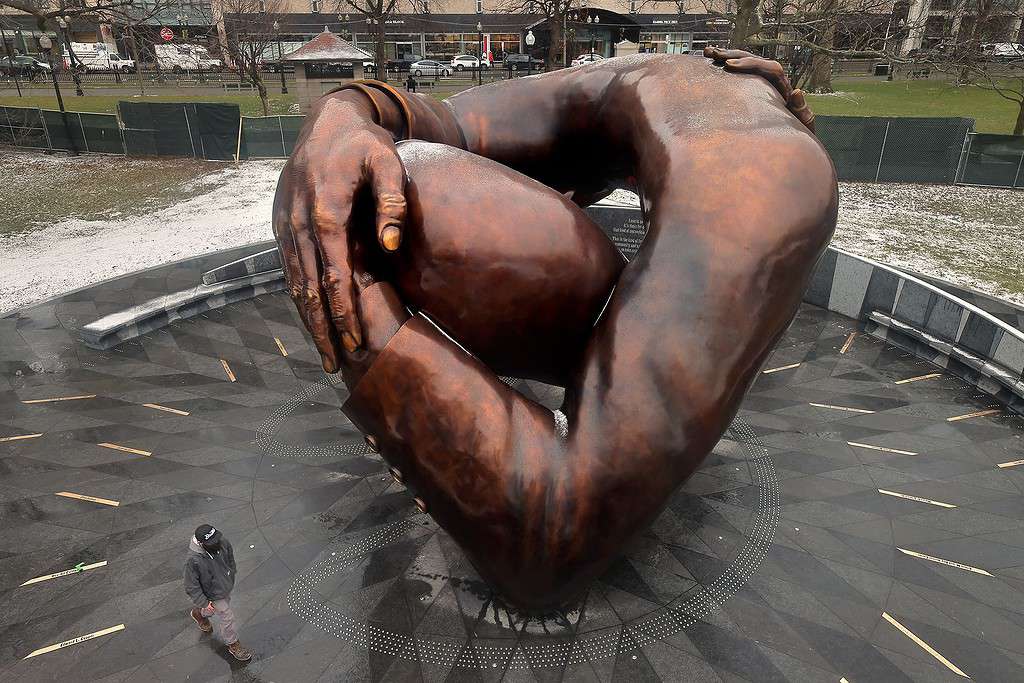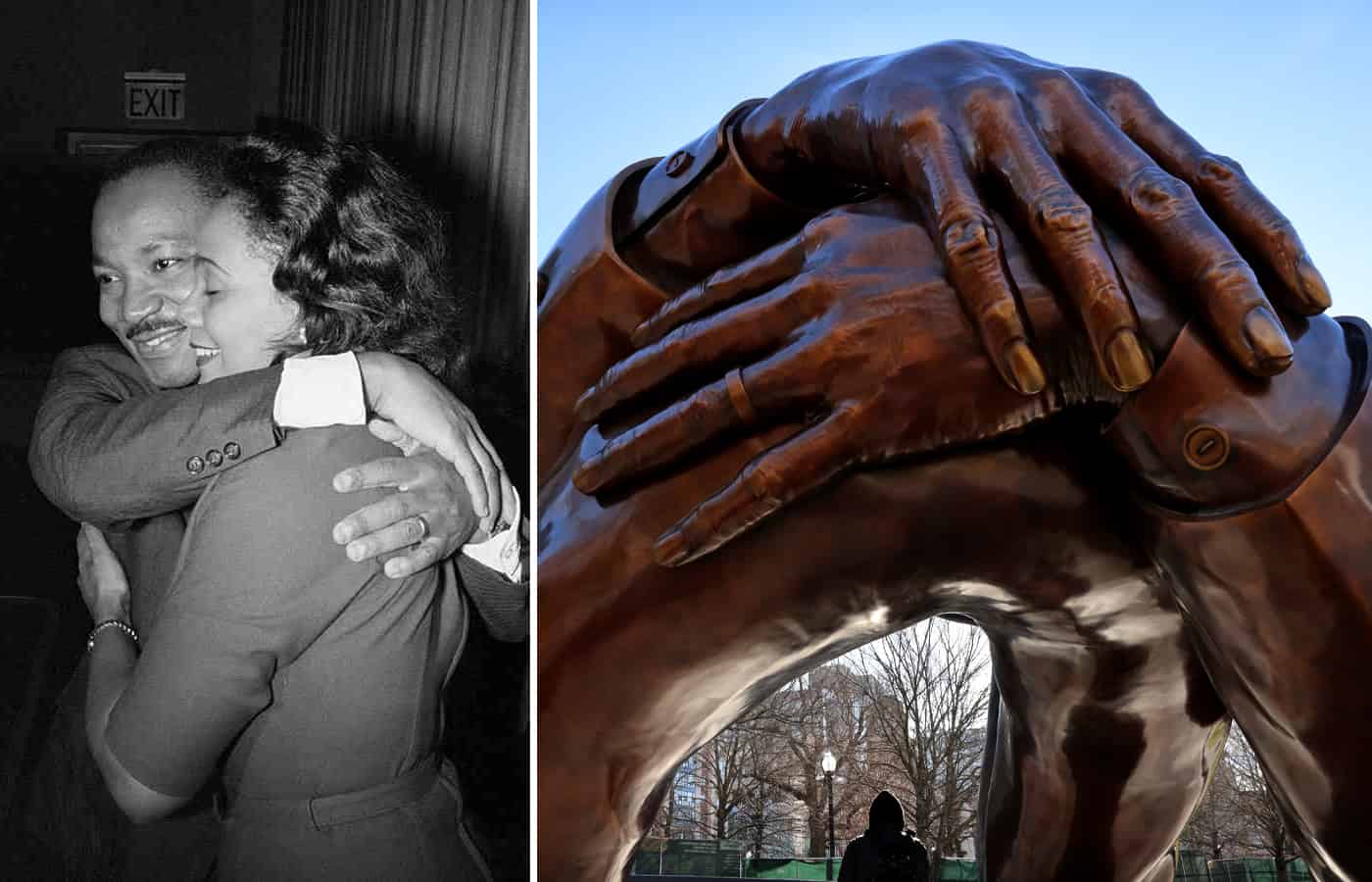The Embrace: In the heart of Atlanta, where the echoes of civil rights activism still reverberate, there stands a sculpture that transcends time—a visual ode to an enduring embrace. Picture a crisp morning in 1957, where Martin Luther King, Jr. and Coretta Scott King, two visionary souls, engage in a profound and tender embrace. This iconic moment, frozen in time, not only encapsulates their deep bond but serves as the inspiration for a modern masterpiece—Hank Willis Thomas’s “The Embrace.” As we delve into the narrative of this sculpture, we unravel the impact of this symbolic embrace on society and the community as a whole.
Table of Contents
A Legacy of Love: Martin Luther King, Jr., Coretta Scott King
In the midst of the civil rights movement, Martin Luther King, Jr. and Coretta Scott King stood united, facing adversity with resilience and love. Their embrace symbolized not only a personal connection but a commitment to a shared dream of equality and justice. Fast forward to the present, and artist Hank Willis Thomas pays homage to this enduring legacy through “The Embrace.” With every contour of the sculpture, Thomas invites us to reflect on the Kings’ journey and the ideals that continue to shape our collective consciousness.

The Impact on Society: A Symbolic Embrace
“The Embrace” stands as more than a static sculpture; it is a living testament to the enduring power of love and unity. In a society grappling with division, the embrace between Martin Luther King, Jr. and Coretta Scott King serves as a beacon of hope. According to the National Museum of African American History and Culture, the symbolism embedded in such images fosters a sense of community, challenging us to confront our shared history and strive for a more equitable future.
A Community United: Catalysts for Change
Beyond the artistic interpretation, “The Embrace” has become a catalyst for community engagement. In cities across the nation, discussions about the sculpture have ignited conversations about racial equality, social justice, and the role of art in fostering collective healing. The impact reaches beyond the confines of the museum or public space; it extends into the very fabric of communities, inspiring dialogue, empathy, and a collective commitment to change.

“The Embrace” as a Mirror: Reflecting Our Shared Humanity
As viewers stand before “The Embrace,” they see not only the sculpture but a reflection of their own humanity. The transformative power of art, as explored in a study by the American Journal of Public Health, is evident in the emotional and psychological impact it has on individuals. “The Embrace” becomes a mirror, prompting self-reflection and challenging societal norms, encouraging us to embrace our shared responsibilities and build a more inclusive future.
! Also Read: Web Stories on Arts & Museum
Educational Impact: Nurturing Future Leaders
Art has the power to shape minds, and “The Embrace” is no exception. Its presence in educational curricula, as noted by the Smithsonian American Art Museum, allows students to engage with history, sparking conversations about the Kings’ legacy and the ongoing struggle for civil rights. The sculpture becomes an educational tool, inspiring the next generation to embrace the values of equality, justice, and compassion.
Conclusion:
As we reflect on “The Embrace,” we recognize its profound impact on society and the community at large. From being a symbol of enduring love between Martin Luther King, Jr. and Coretta Scott King to becoming a catalyst for conversations about unity, justice, and community engagement, the sculpture transcends its physical form. It challenges us to embrace our shared humanity and work towards a future where love, compassion, and justice are the cornerstones of our collective existence.
In the embrace of this powerful sculpture, we find ourselves at a crossroads: How can we, inspired by the legacy of the Kings and the artistic vision of Hank Willis Thomas, continue to cultivate a society that embraces the values of equality and justice?
